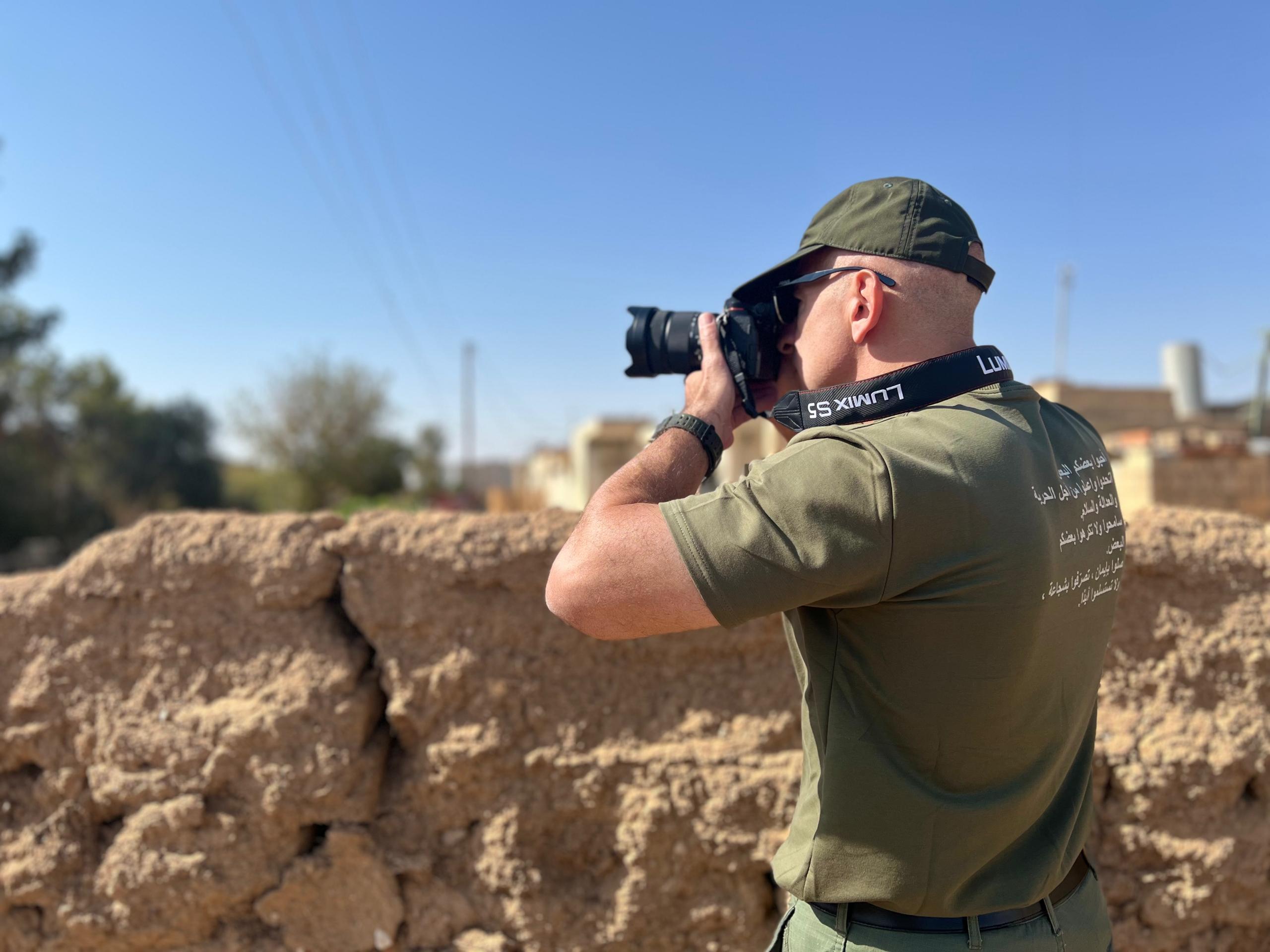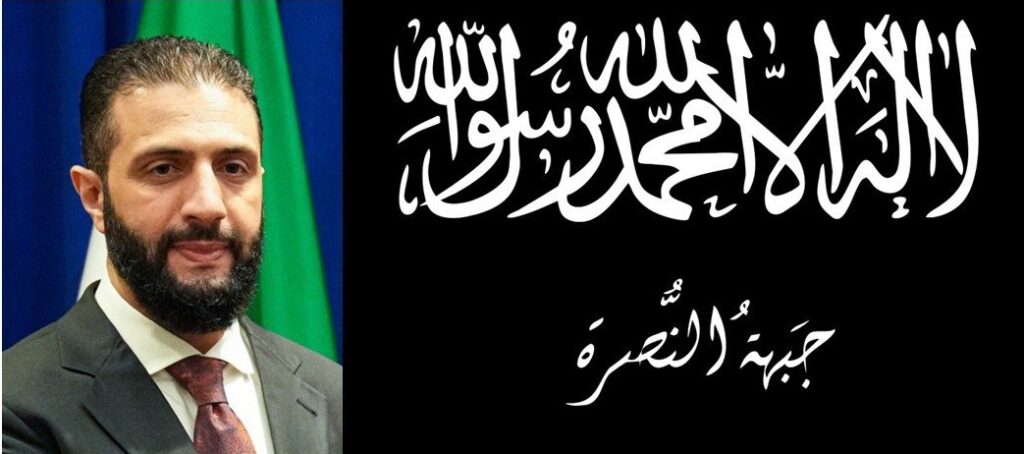In a recent statement, al-Julani, Syria’s new de facto leader, claimed that he was a defender of the nation because he had fought ISIS.
However, in an interview with The Gateway Pundit, Aram Hanna, a member of the Kurdish-led Syrian Democratic Forces (SDF) General Command, explained, “Yes, he fought ISIS,” but added, “he was fighting to be the leader.”
Hanna paused to let that sink in. The man most likely to be recognized by foreign governments as the rightful leader of Syria had once been a member of a terrorist coalition that nearly established a medieval caliphate across two countries and pushed into others.
He repeated, “To be the leader of ISIS, not to defeat them. This is a fact.”
Abu Mohammad al-Julani, born Ahmad al-Sharaa, began his militant career in al-Qaeda in Iraq under Abu Bakr al-Baghdadi. As Syria’s war erupted in 2011, he was sent to establish a local branch, founding Jabhat al-Nusra in early 2012. The group quickly became one of the most powerful Islamist factions in Syria.
When Baghdadi tried to merge al-Nusra with his Islamic State of Iraq to form ISIS, Julani refused and instead pledged allegiance to al-Qaeda leader Ayman al-Zawahiri. The split triggered open warfare between ISIS and al-Nusra, dividing the global jihadist movement.
In 2016, Julani rebranded al-Nusra as Jabhat Fatah al-Sham, and a year later united several Islamist factions into Hayat Tahrir al-Sham (HTS). Today, Julani and HTS rule large parts of Syria, including the capital, Damascus, presenting themselves as a governing authority while retaining their origins in ISIS and al-Qaeda.
While al-Julani consolidated power in Damascus, the Kurdish-led Syrian Democratic Forces (SDF) remained the primary opposition in the north. Formed in October 2015 with U.S. backing, the SDF united a broad coalition of militias to fight ISIS. During the war, the SDF, supported by the U.S.-led coalition, became the most effective local force against the Islamic State, declaring its territorial defeat in Syria by early 2019.
The SDF is a multi-ethnic and multi-religious alliance, composed of Kurdish, Arab, Assyrian/Christian, Turkmen, and other community units. It is Kurdish-led, with the People’s Protection Units (YPG) forming its core, but all ethnicities are represented.
Aram Hanna, for example, a 32-year-old Armenian Syrian Christian, serves in the SDF General Command. The coalition includes both integrated and separate Christian, Kurdish, and Arab units, each formed to defend their own communities during the war.
For many Americans, it is important to understand that the Kurds are not Arabs but a distinct people with their own language and culture. Marginalized by Damascus for decades, they, along with Christians and Arabs in Rojava, were attacked during both the civil war and the ISIS campaign. Out of necessity, these groups created their own protection forces, which eventually merged under the single umbrella of the SDF.
The SDF’s inclusive structure is reflected not only in its ranks but also in its governance. Women serve as front-line soldiers and hold prominent leadership roles, and all official documents in Rojava are written in three languages: Arabic, Kurdish, and Assyrian, to respect the region’s diverse population.
In contrast, the Damascus government under al-Julani enforces a strict form of Islam that marginalizes minorities and severely restricts women’s rights. The behavior of Julani’s government is disturbingly reminiscent of the ISIS and al-Qaeda extremists that the SDF once fought to defeat.
Hanna emphasized that the SDF’s vision for Syria is not about carving out a Kurdish state or creating separate ethnic enclaves. Instead, he said, it is about building a free and united Syria where every citizen, Kurdish, Arab, Christian, Armenian, or Yazidi, can live with dignity and preserve their own identity, language, and culture.
“We want to live as free Syrians,” he said firmly.
Hanna explained that the goal was for everyone to be able to call themselves Syrian while remaining true to their heritage.
“We don’t want the Kurds to make everyone Kurdish or the Syrian government to make everyone Arab. We can live together, each person with his identity, his rights, his language, and his celebrations. That’s what we have now in our areas.”
He added that the SDF envisions a single, unified Syria, not a partitioned one. “Syria should not be divided,” he said. “We want one united Syria that ensures a good life for all its people.”
When asked about al-Julani’s government, Hanna was skeptical of its longevity. He predicted that Julani’s rule would not last long, saying that most Syrians, including Sunnis, Druze, Kurds, Christians, and Alawites, do not see him as a legitimate leader. He noted that even among Sunni communities in Hama and Aleppo, many reject Julani’s leadership, while minorities across the country distrust his Islamist rule.
Still, Hanna and other Syrians I spoke to acknowledged the uncertainty of what might come next. If al-Julani falls, Syria could once again descend into chaos and factional warfare. Yet in Rojava, the Kurds, Christians, and Arabs remain determined to defend their region. As long as they hold their weapons, they believe they can protect their people from collapse, but they also hope that one day a fair and elected government in Damascus will guarantee equal rights and peace for all Syrians.

Read the full article here


